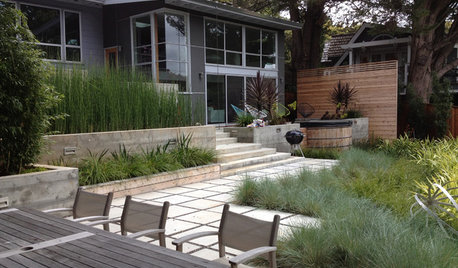Lets share some knowledge
katieauthier
14 years ago
Related Stories

GREEN BUILDINGLet’s Clear Up Some Confusion About Solar Panels
Different panel types do different things. If you want solar energy for your home, get the basics here first
Full Story
LANDSCAPE DESIGNLet's Revisit Some Revolutionary Garden Thinking
One book changed the vision of postwar British garden design forever. See how it's influencing your garden today
Full Story
DECORATING GUIDESBudget Decorator: Let’s Go Thrifting
Dip into the treasure trove of secondhand pieces for decor that shows your resourcefulness as much as your personality
Full Story
GARDENING GUIDESLet's Weed Out 4 Native Plant Myths
Plant wisely for a garden that supports pollinators and requires less work
Full Story
DECORATING GUIDESDitch the Rules but Keep Some Tools
Be fearless, but follow some basic decorating strategies to achieve the best results
Full Story
GARDENING GUIDESLet Lilac Love Flower This Spring
Whatever you bestow or receive for Mother's Day, lilacs can be an unmatched gift in the garden in May
Full Story
HOUZZ TOURSHouzz Tour: A Boston Brownstone Is Restored to Glory and Then Some
Victorian-era architectural details create a strong base for an eclectic mix of furniture, accessories and modern art
Full Story
KITCHEN DESIGNLet's Toast Small Kitchens Everywhere
It's time for a tribute to the many wonderful qualities of compact kitchens — and some tips on how to plan them well
Full Story
KIDS’ SPACESShare Tactics: Great Ideas for Shared Kids' Rooms
Maintain peace and maybe even inspire togetherness with decorating strategies from a designer with seven grandchildren
Full Story
BEDROOMSLet Your Headboard Inspire the Whole Bedroom
Whether you want the headboard to stand out or blend in, here are some tips for creating a beautiful and seamless sanctuary
Full StorySponsored
Custom Craftsmanship & Construction Solutions in Franklin County
More Discussions









carolb_w_fl_coastal_9b
amberroses
Related Professionals
New Mexico Landscape Architects & Landscape Designers · Rossville Landscape Architects & Landscape Designers · Saint Charles Landscape Architects & Landscape Designers · Newcastle Landscape Architects & Landscape Designers · Miller Place Landscape Contractors · North Haven Landscape Contractors · Pueblo West Landscape Contractors · Shirley Landscape Contractors · Twin Falls Landscape Contractors · Baker Decks, Patios & Outdoor Enclosures · Northbrook Decks, Patios & Outdoor Enclosures · Pittsburgh Decks, Patios & Outdoor Enclosures · Provo Decks, Patios & Outdoor Enclosures · Beverly Hills Siding & Exteriors · Inwood Siding & Exteriorsgoldenpond
thonotorose
katieauthierOriginal Author
mrs_tlc
mrs_tlc
aflorida
corar4gw
katieauthierOriginal Author
amberroses
ritaweeda
mboston_gw
happy_fl_gardener; 9a, near DeLand
mrs_tlc
mrs_tlc
katkin_gw
gardengimp
mrs_tlc
mrs_tlc
sharbear50
trini1trini
SusieQsie_Fla
trini1trini
westhamutd
flyingfish2
tomncath
flyingfish2
gardencpa
sunnystate25